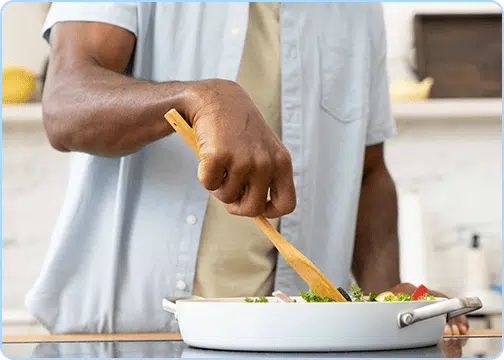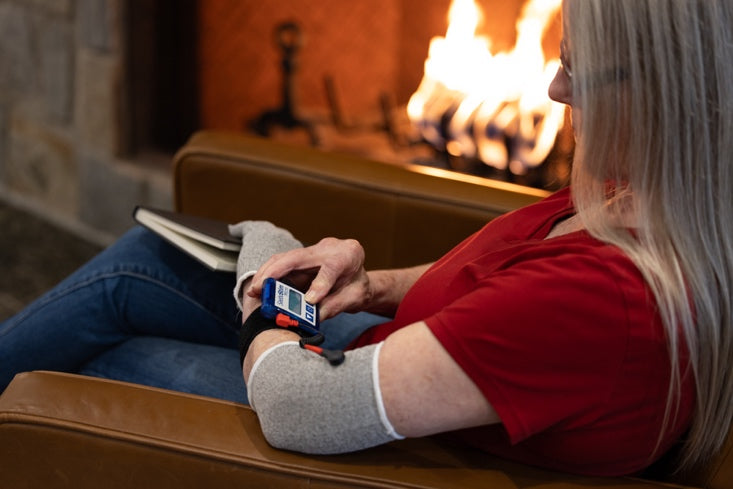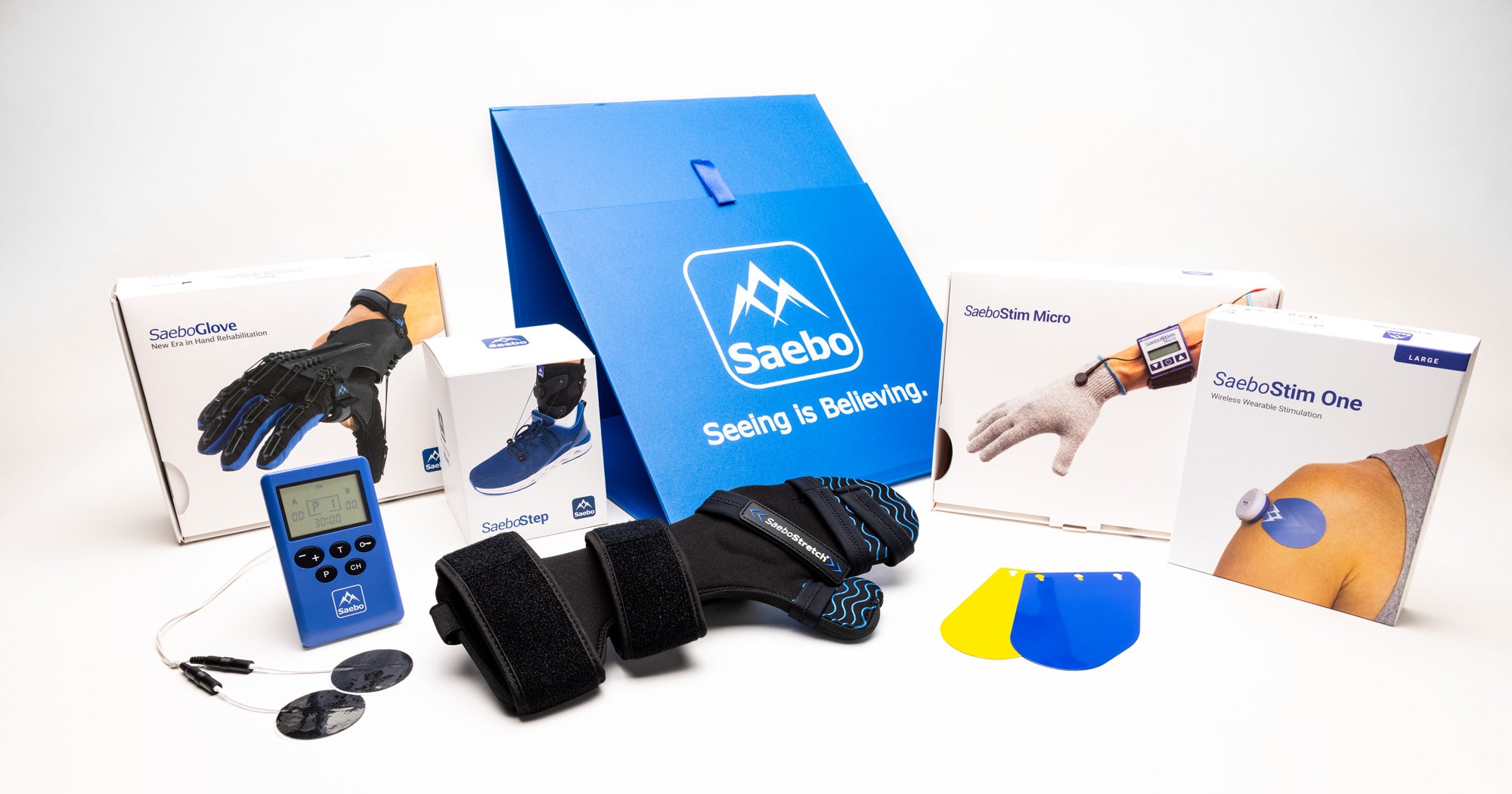Constraint-Induced Movement Therapy (CIMT): A Proven Stroke Rehabilitation Technique

Constraint induced movement therapy (CIMT) stands out as one of the most effective rehabilitation techniques for post-stroke upper limb rehabilitation to improve motor recocery. Following a stroke, as many as 80% of survivors experience motor impairments of the upper limb [1]. Due to the prevalence of motor impairment to the hand or arm, treatment programs are often largely centered around regaining meaningful use of the upper extremity.
CIMT offers a specialized approach that forces the use of the paretic arm by restraining the unaffected limb while engaging in repetitive and intensive stroke rehab exercises with the affected limb. Traditional treatment methods serve their purpose, but constraint induced movement therapy uses specific movement techniques, behavioral strategies, and restriction methods that boost the involved limb's use. This blog explores the simple aspects of CIMT, proven protocols, helpful rehab tools, and practical strategies you can use both at home and in clinical settings.
CIMT Therapy Explained: Basics and Benefits
What is constraint-induced movement therapy?
The basic idea is simple - restrict the healthy limb while providing intensive training to the affected arm. This combination makes patients use their impaired side during daily activities and prohibits the ability to resort to compensatory strategies. It tackles what researchers call "learned non-use" - when stroke survivors avoid using their weaker limb because it feels too hard at first.
The core components are generally described in the literature as:
- Repetitive, task-specific training of the paretic limb (sometimes called "shaping" or "task practice")
- Behavioral techniques (e.g., adherence strategies, problem-solving, home practice logs, therapist feedback) to encourage transfer of gains into daily life
- Constraint of the unimpaired limb (usually with a mitt, sling, or other device) to limit compensation and force use of the paretic side
Who is appropriate to complete CIMT?
Not everyone is going to be benefit from restraining movement, as some level of functional arm use is necessary to be able to complete activities. Common conditions being treated through CIMT include stroke or CVA, cerebral palsy, SCI or traumatic brain injury that results in hemiparesis, or even multiple sclerosis.
Required level of function [2]:
- 10 degrees active wrist extension on the involved hand
- 10 degrees active thumb abduction on the involved hand
- 10 degrees active extension of any other two digits on the involved hand
- Limited spasticity (0,1,1⁺) according to modified Ashworth scale
- Ability to move the involved arm to at least 45 degrees of shoulder flexion and abduction, and 90 degrees of elbow flexion and extension
- Adequate balance
- Minimal cognitive dysfunction
How CIMT helps stroke patients regain arm movement
CIMT restores function through multiple mechanisms. By restricting the unaffected limb, patients are compelled to use the affected side in everyday activities, directly addressing “learned non-use.” Alongside this, structured functional training and high-repetition practice drive motor recovery.
Importantly, the approach combines intensive motor training with behavioral strategies that encourage transfer to real-life settings, resulting in measurable improvements in activities of daily living. Neuroplasticity is the term to describe the brains’ ability to complete cortical remapping or brain rewiring after a stroke to learn new skills. Constraint therapy is well positioned to support this remapping as neuroplasticity thrives on completing repetitive and intentional activities. Learn more about neuroplasticity here.
Key differences between CIMT and traditional rehab
CIMT follows specific guidelines that can differ significantly from general exercises. While there is no question that traditional rehab approaches like passive or active motion, task-specific training or repetition is impactful in recovery, constraint therapy is a structured and encapsulating approach to this. Many protocols exist and can fall into either ‘traditional’ or modified CIMT. While the focus is the same, the traditional protocols tend to be much more robust or rigid, more on that to come in a moment.
One prominent feature of intensive movement therapy is the transfer package—behavioral strategies that help carry gains into daily life. Through problem-solving, home practice, and structured feedback, it reinforces impaired limb use. This systematic approach can lead to greater functional improvements than conventional therapies that lack these components.
CIMT Protocol for Stroke Patients
Traditional constraint-induced movement therapy stands out as a gold-standard approach. The original protocol is simple- restrain the unaffected arm for 90% of waking hours while using the affected limb for daily tasks. Patients must participate in 6 hours of daily therapy for 2 weeks [3]. These requirements limit clinical adoption despite their effectiveness, although the intensive requirements may create barriers to implementation.
Modified Constraint-Induced Movement Therapy
Modified movement therapy addresses these practical challenges while keeping the therapeutic principles intact. Research shows modified methods typically reduces daily restraint time and spreads therapy across longer periods. Protocols range from 30 minutes to 6 hours of daily training, delivered 2 to 7 days per week for 2 to 12 weeks [4].
Despite differences in intensity, both methods share three fundamental components:
- Restraint of the less impaired upper extremity (often with a mitt or sling)
- Repetitive task practice to retrain motor skills
- Behavioral strategies (the transfer package) to promote carryover into daily life
The transfer package is what makes this approach unique compared to many traditional therapies. It goes beyond the clinic by using tools like:
- Home practice assignments tailored to patient goals (e.g., cooking, buttoning shirts, carrying laundry)
- Daily activity logs to track affected limb use
- Problem-solving strategies to overcome barriers (e.g., how to fold laundry one-handed)
These techniques ensure patients don’t just improve in therapy sessions, but use their weaker limb at home, work, or in the community. Research confirms that even modified techniques yields positive results for arm-hand function. Patients consistently report more frequent use of their weaker limb and better quality of movement in real-world activities such as grooming, eating, or carrying groceries.
Constraint-induced movement therapy exercises
Shaping activities remain the foundation of effective constraint therapy. This approach involves matching tasks to patient abilities, providing immediate positive feedback, and progressively increasing task difficulty based on motor gains. Common activities include different forms of reaching, pushing or pulling household objects, or doing towel slides across a table. Functional exercises such as grasping coins, picking up cups or folding laundry further expand the benefit.
Some stroke rehabilitation exercises:
- Reaching for objects on shelves or in cabinets
- Picking up coins, marbles, or buttons
- Grasping and lifting cups or glasses
- Folding towels, clothes, or napkins
- Opening and closing jars or containers
- Pouring liquids from pitchers or bottles
- Turning pages in a book or magazine
- Manipulating utensils for eating (forks, spoons)
This list can be adapted to each patient’s home environment and goals, making therapy both functional and meaningful while promoting use of the affected limb throughout the day.
Adaptive strategies and tools for CIMT
Electrical stimulation and other assistive devices
Neuromuscular electrical stimulation (NMES) is one stroke recovery technology that can enhance the effects of CIMT. When combined with task practice, stimulation helps patients overcome learned non-use after stroke and can improve motor function more effectively than either approach alone.
For patients with more severe impairments, expanded protocols adapts the same core principles. Instead of restraining the unaffected limb, assistive devices support movement, allowing patients who have difficulty opening their hands to participate in therapy. These adaptations broaden access to CIMT and ensure more patients can benefit from its proven effects. The SaeboStim Pro or SaeboStim One are great options for electrical stimulation.
Other devices, like the SaeboGlove, can help patients with weak hand opening or mild spasticity. The support into digit extension is beneficial by allowing more repetition with higher success. Similarly, individuals with severe spasticity benefit from SaeboFlex's increasing support. These devices let patients perform essential grasp-and-release activities during CIMT.
The SaeboMAS and SaeboMAS mini work alongside treatment by supporting arm weight and providing a gravity minimized plane. This helps manage tone and enables improved control of hand movements. Better support means more repetitions without fatigue—key to rewiring the brain.
Home-Based CIMT Programs
Home-based rehab gives patients a practical alternative to clinics, allowing patients to practice in their own environment. One of the best ways to maximize the benefits treatment is by completing stroke rehab at home. By using real-life examples in your normal environment, rehab becomes much more meaningful and motivating, on aspect that home-based CIMT is posed well to accomplish.
How home CIMT programs work
Home programs often starts with a training session in a clinic where therapists teach both patients and their non-professional coaches (usually family members). Generally, patients then practice about 2 hours daily over 4 weeks. Therapists can make periodic visits to check progress and adjust exercises.
Most protocols include:
- Daily independent practice with a family member as coach
- Constraint of the unaffected hand during waking hours
- Weekly therapist visits to guide and adjust programs
- Goals that focus on ground activities
Traditional clinic-based CIMT may need 60 hours or more of professional supervision. Home programs, however, can work with just 15 hours of therapist contact to ensure proper completion. This makes them better suited to long-term care.
Tips to boost adherence and motivation
Regular therapist check-ins are crucial to successful home programs. Many studies show that participants found therapist feedback "critical" to stay motivated and accountable [5]. Clear, personal goals increase commitment, though patients get better results with therapist's help in this process.
Flexible scheduling helps people manage life's demands. Finding the best times based on energy levels and availability leads to better consistency.
Setting realistic expectations about progress and outcomes prevents disappointment. Explaining that improvements may need "willpower, endurance and regular training" helps prepare both patients and their caregivers for the commitment ahead.
Conclusion
CIMT has emerged as a powerful rehabilitation method for stroke survivors or those living with a traumatic brain injury (TBI) or even spinal cord injuries (SCI). This approach tackles "learned non-use" through restriction, intensive practice, and behavioral strategies with research showing this rehab protocol can lead to significant, and long-lasting improvements with arm function.
While traditional movement therapy approaches are robust and highly structured, modified protocols have made this therapy more available to patients without compromising its effectiveness. Stroke rehab devices like gloves or arm supports have expanded the effectiveness and reach of constraint rehab. These innovations help patients with different levels of impairment to participate and benefit from this rehabilitative approach.
Principles of neuroplasticity help explain the effectiveness. The brain rewires itself through forced use of the affected limb combined with intensive, repetitive practice. Constraining the limb stands out as one of the most evidence-backed approaches for upper limb function after stroke, whether in clinical settings or at home.
While not everyone is eligible or appropriate for this approach, those who meet the eligibility requirements should consider it as an additional treatment tool for both in-clinic rehab or at-home progressions. The experience of recovery after stroke requires dedication, but CIMT offers a well-laid-out, proven path to regain meaningful upper limb function.
References
- https://www.medicaljournals.se/jrm/content/html/10.2340/16501977-2813
- https://alliancerehab.com.au/mcimt/
- https://strokengine.ca/en/interventions/constraint-induced-movement-therapy-upper-extremity
- https://journals.sagepub.com/doi/full/10.3233/NRE-220009
- https://pmc.ncbi.nlm.nih.gov/articles/PMC6716206/
Todo el contenido de este blog es únicamente informativo y no sustituye el consejo, diagnóstico ni tratamiento médico profesional. Consulte siempre con su médico u otro profesional de la salud cualificado si tiene alguna pregunta sobre una afección médica. Si cree que puede tener una emergencia médica, llame a su médico o al 911 de inmediato. Confiar en la información proporcionada por el sitio web de Saebo es bajo su propio riesgo.



